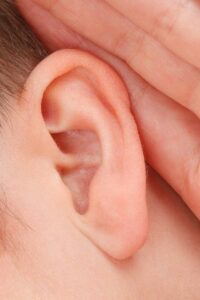
Is Ear Hair Typical?
Is Ear Hair Typical?: You may have had hair in your ears for years, or you may have recently discovered it. In either scenario, you might wonder, “What’s the big deal with hair sprouting on and in my ears?” You should know that ear hair is quite natural.
As people age, they notice more hair growing out of their ears, especially adult men. There aren’t much scientific data to explain why this occurs, but the good news is that an abundance of hair emerging from the ears is probably not a cause for concern. There are some health issues connected with abundant ear hair, but there is usually no medical reason to remove it.
There are two forms of ear hair: vellus and tragi.
A thin coating of microscopic hair covers much of the human body, including the pinna and earlobes. Vellus hair is the name given to this peach fuzz-like coating. This type of hair appears in childhood and aids the body in temperature regulation.
Although vellus hairs can grow to be long as they mature, they lack colour and are difficult to notice. This ear hair is quite common, difficult to detect, and will most likely never affect you.
Tragi hairs are likely to be found if you search the internet for long or wiry hairs from within your ears or those of a loved one.
Tragi hairs are thicker and darker terminal hairs than vellus hairs. They typically offer protection. Tragi hairs begin in the external ear canal and may grow out of the ear in clusters in some situations.
Is there a function for ear hair?
Terminal ear hairs and wax produced by the body constitute a protective barrier. They, like nasal hairs, help prevent germs, bacteria, and debris from entering and damaging your inner ear.
So having a few ear hairs is not only natural but also beneficial. When you have more ear hair than you need, you might choose to remove or clip it.
How to Remove Them
Typically, the decision to remove ear hair is mainly cosmetic. If you wish to eliminate them, you have a few options.
You can remove ear hair quickly and simply at home with a trimmer or tweezers, but you will need to do this frequently. You can also visit a salon now and then to have your hair waxed. This lasts much longer but has an “ouch” factor.
You can also have repeated laser hair removal sessions to eradicate the hair permanently. Just keep in mind that permanent hair removal is not cheap.
Are there any risks to having too much ear hair?
Most of the time, some hair in the ear (even if it appears to be a lot) is entirely natural and not cause for concern.
However, excessive ear hair can crowd and plug the ear canal. They may make you more prone to mild conditions such as the swimmer’s ear, as the ear canal narrows and water accumulates.
Similarly, removing extra ear hair can be used to alleviate tinnitus (also known as ringing in the ears).
On a more serious note, there is medical debate regarding whether hair in the ear canal and an earlobe wrinkle can foretell the development of coronary artery disease (CAD).
Trusted Source references a 1989 study that found a link between Indian men with ear hair (and an earlobe crease) and the development of heart disease a recent literature review.
The study, however, solely included South Asian subjects. The study also mentions that several follow-up research did not find a significant association.
So far, we don’t know for sure whether ear hair increases the chance of acquiring CHD.
More research suggests that a natural fold in the earlobe is a more significant predictor of CHD. Furthermore, earlobe folds and extra ear hair frequently coexist, which may explain the contentious link between ear hair and CHD.
Who develops extra ear hair?
Although extra ear hair can arise in anyone, most occurrences occur in adult or older men. Later in life, when the typical growth and shedding cycle of hair follicles “gets out of hand,” ear hair becomes thicker and longer.
According to a Scientific American article, men have more hair in their ears later in life because their follicles become more sensitive to testosterone levels and grow larger.
This indicates that the hair itself thickens. This argument would also explain why ear hair growth is not as noticeable in women as in many men.
People of a given ethnicity appear more prone to excessive ear hair development than others. Again, there is little clinical research on ear hair, but an older study from 1990 discovered that South Asian groups had exceptionally high amounts of ear hair.
According to Guinness World Records, Victor Anthony, a retiree from Madurai, India, has the world’s most extended ear hair. It measures little more than 10 cm in length.
The final word
Excessive hair in the ear is natural and harmless in most situations. However, you should have your doctor check it out as part of a standard checkup.
You can remove it for cosmetic purposes with little risk or leave it alone.
Brought To You By – Microsuction Bury St Edmonds
The post Is Ear Hair Typical? appeared first on https://gqcentral.co.uk


Comments are closed